J has a system to answer most of your analog queries. A massive room houses Magico Q7 mk2 with a stack of 6 REL subs driven by Alieno OTL (I have previously heard the Alieno with the M3 and compared it to Dagostino with a Feickert Firebird, but will wait to write more on details as I will get a further compare of the amps with that owner’s Techdas Af3 premium and Lampi Pacific).
J’s preamp is the NAT Magnetostat, which J moved on to from the Allnic L5000. He also has the Berning and the Veloce preamps, and we did briefly compare the NAT to the Dartzeel as a preamp (I have previously had the NAT Magnetostat SE on audition in my home system next to a Jadis pre).
As a background, he was the one who recommended the Allnic designer to use the KR 242s in the Allnic and persuaded Eunice Kron to produce those, so that there can be a current production – so Lampi nation has him to thank for that.
Given the amount of gear, I paid J two visits, and spent two full days with changes made to the set up. I am posting this write-up as Day 1 and Day 2. The findings on Day 1 did change to Day 2.
A long read, but it gets much better on Day 2 as compared to Day 1.
The analog that we were able to compare was:
- Kodo Beat (modded) and Vyger Indian Signature (modded)
- Aesthetix IO Eclipse (3-box), Allnic H5000 with WE 422a recti, and the Dartzeel phono/pre (older model)
- Kiseki Purple Heart, Airtight Supreme, Allnic Puritas, Lyra Atlas, vDH Stradivarius, Benz LPS, and Zyx Omega carts
How did we go about this, exactly?
John previously owned the Durand Talea and the Telos, also the Reed and the Grandezza. He then started making his own arms (non-commercial, they are not sold). I have put the technical details of this arm at the bottom of the write-up.
John’s room is heavily treated. He is extremely resourceful as a DIY person and can change things at will. The Daad was laid out with him with the help of Fabio, as Fabio is the distributor for Alieno in Italy and also the man behind Daad.
The Kodo Beat was modded to have 3 identical arms, with the:
- Zyx Omega into the IO Eclipse via Allnic headamp HA 3000
- Atlas into the Allnic
- Alnic Puritas into the Allnic
The Vyger was modded to have 3 identical tonearms, same as the Kodo, with the:
- Allnic Puritas into the Allnic
- Kiseki into the Allnic
- Airtight Supreme into the Dartzeel
As the Allnic Puritas into the Allnic phono was common to both tables, we played the same record on each, and compared record by record. After about an hour, I realized I did not have a preference. I thought I would be slam dunk in favour of one table over the other. Yet, the difference in the two tables was extremely small. On the Ricci Lalo Symphonie Espagnole Decca ED2, the flow of the Vyger was more prominent over the Kodo. There was more decay. The flow was also obvious in gallop of the Speakers Corner Argenta Espana. However, these attributes were not observed across the other LPs, and if they did exist, were not very noticeable across the other LPs. On all LPs, the Vyger seemed to have a bit more openness and air on top, but this could have been easily changed by a cable or some sort of tweak.
I checked with J, and he mentioned the mods he has done have got the tables closer together. The Vyger with its stock belt did not have the drive of the kodo, but after a lot of experimentation, J has found a belt and modified the cog that improves the Vyger drive. The Platter of the two tables is also considerably changed. J did say the stock Vyger had more flow than the stock Kodo. He also said there was not much to choose on the stage between the two.
A reader needs to understand that this is not a standard Vyger – there is no linear tracker, air pump, or vacuum suck down being used. Since the first visit to J, I have heard the later generations of the stock Vyger Indian Signature and Atlantis in 3 other systems, and will hear it in a 4th (Gian’s) with compares. Will write-up my experiences on that later.
Also, keep in mind that in the big room, stack of 6 subs, numerous tweaks including Schnerzinger, could already be leading to a sizeable bass and stage that makes differences in the components on these parameters less significant. Therefore, I had no conclusions to draw between the two tables.
Having done the Allnic Puritas on both tables, we played some vinyls on the Kodo itself using the Zyx and the Lyra. You could play the same vinyl with the Zyx through the IO, followed by the Lyra through the Allnic. The Lyra had the most transient speed, slam, bass, and information of the cartridges on the Kodo. We therefore switched, put the Lyra into the IO, and the Zyx into the Allnic via the headamp. I preferred the Allnic phono sound, followed by the Lyra cartridge sound. Lyra was preferred over Zyx into the IO, and Lyra was preferred over the Allnic and Zyx into the Allnic. If I was to rank the sound on the Kodo, it would be
- Lyra Atlas with Allnic
- Allnic Puritas with Allnic
The Kodo shone the best with the Atlas into the Allnic. This is not surprising as Steve Dobbins works mostly with the Lyra and the vDh carts, and the Allnic and the CH phonos.
The Aesthetix IO Eclipse sounded a bit muddy and sluggish compared to the Allnic, also noisier. The IO did have a downward weight, a midbass slam and bass, but less openness on top. It is possible that in this system, with a wide soundstage and bass, the differences in stage and bass of the carts and the tables and the phonos were not being apparent and pitching one in favour of the other. On a Quad ESL system, maybe the IO’s midbass slam will have a much greater impact. Here, the transparency and the openness of the Allnic, and its flow, clearly won out, and it gave up nothing in the lower registers.
Having heard all the cartridges on the Kodo, we shifted to the Vyger. We played the Kiseki via the Allnic, and the Airtight Supreme via the Dartzeel.
This was my first time listening to the Kiseki, and based on forum reports, I was expecting to be disappointed since some relate the Kiseki to the Koetsu (which I do not like). The Kiseki into the Allnic produced the best sound in the system! The first LP we played was the choral part of the Solti’s Ode to Joy on the Decca, and vocals, wind instruments, soundstage, were all fantastic. The tone was rich, bodied, real, the resolution and details were not as high as the Lyra or the Airtight, nor was the slam, but it was sufficient to make it the choice by a clear margin. There was more emotion and sway.
The Airtight into the Dartzeel disappointed. Though the Dartzeel had the highest soundstage, bass, and punch of all the combinations, the tone and fluidity was not as good. We therefore switched Kiseki into the Dartzeel, and the Airtight into the Allnic. The Kiseki sounded better than the Airtight (more natural) into the Dartzeel, and the Airtight made the Allnic sound less natural than with the Kiseki.
The Dartzeel was on stillpoints, so we put a wooden board between the Dart and the Stillpoints. Then, we took the Dart off the NAT preamp, and put it directly into the Alieno, thus using Dartzeel as both pre and phono rather than only the phono. Now it sounded better – during Argenta Espana it had sounded unbalanced, but now directly into the power amp, it sounded more balanced across the spectrum. It had the largest stage, punch, and bass among the phono stages, and also sounded more immediate, but the metallic tone persisted. If this tone issue is addressed by some tweak, this will be the choice phono. Till then, it lags. Of course, the Dartzeel pre with the Dartzeel power forms part of the finest system I have heard, so I will look to listen to the Dart phono again in a non-Dart system.
I have also previously had a good opinion of the Airtight Opus as compared to the Atlas in Gian’s system, but today clearly the Airtight Supreme was not sounding at an acceptable level. Albert Porter does use the Opus through the Allnic, and had recommended the Kiseki to J.
To sum up, there was not much I could conclude for my tastes on the Kodo vs the Vyger. I would be nitpicking, but this was not conclusive to say if I prefer a DD or a belt. On the other hand, the Allnic and the Kiseki were clear preferences, and the Allnic made the most difference to the sound, followed by the Kiseki.
Now…the above was my report written following Day 1, and I have left it unchanged. The following is Day 2, and you can see the changes that happen.
One clarification… No cartridge was changed on day 1 or day 2. They were changed in between (vdh for zyx was the main swap). Allnic Puritas was swapped for Benz LPS but latter went out of contention quickly.
Each table had three carts with the same arm. Allnic was the phono common to the two tables. For kodo carts, you could compare Allnic with aesthetix. For Vyger carts, you could compare Allnic with Dartzeel. On day 1, Allnic Puritas was on both tables. On day 2, we tried moving vdh to the LT at the end but gave up so it has not been covered
See if this helps understand. You can connect carts from the kodo to either Allnic or IO, and carts from Vyger to Allnic or Dartzeel.
Day 2
This day, we focused on
- VdH XGW Stradivarius (0.38 output) with Lyra Atlas and Benz LPS on the Kodo Beat
- Aesthetix IO Eclipse and the Allnic 5000 using the vdh and the Atlas
- Rolling valves on the Alieno and recomparing carts
By Day 2, J had made some additional adjustments to his system. He had pulled out the Scherzinger piccolos to widen the stage. Also, his system had more flow and ease in bass. He had replaced the Psvane 300b with RK 300b, the special 300bs that Kron has recently made.
Many carts had changed. We were now using the Atlas into Aesthetix, the VdH and the Benz LPS into the Allnic, all on the Kodo. I started with the compares of Benz and VdH into the Allnic. The VdH on the Heifetz Kreutzer Sonata, Cisco reissue, was just the most real sound that was coming through…in comparison, Benz was over bodied and rolled off. This is not always the case. I have compared the Benz LPS to the Titan in another system I will write about, and the Benz tone had its advantages over the Titan. Note: The ED1 of the Heifetz Kreutzer is better than the Cisco reissue, but this reissue is really good and clearly one I can settle for given the price difference.
I did similar compares on Henryk Szeryng Classic records and US ED1 Lalo Symphonie Espagnole, and on a couple of others. The VDH was being preferred easily, so we decided to move on and compare vdh => Allnic vs Lyra => Aesthetix.
The Kreutzer was used to check for liquidity and tone of piano and violin combined. The Lalo is just fantastically exciting with the blatt of the brass and the bass of the orchestra combining with one of my favorite violin pieces. The Ricci Decca ED2 is more of a collectible, but the Szeryng is better from both a sonics point – the Ricci has more intricate violin play. The Classic records sounds better than my US ED1, but the UK ED1 in the General’s system (report to come up) sounds better than my classic records. I prefer the Classic records Szeryng to my Ricci.
I then requested the subs to be switched off, as I wanted to check attributes of the carts in terms of stage and bass without the subs playing a role
Now this was surprising…the Lyra on Aesthetix was sounding better, and by memory, I had been disappointed with it on the Aesthetix on Day 1. We continued the compares adding more records – Solti Beethoven 9 Speaker’s Corner, beginning of the 1st movement, followed by the Ode to Joy choral, Rubinstein/BSO RCA Red seal Emperor. On each record, the Lyra had similar tonality to the VdH, especially matching the exquisite tone on the violins, but it also had more oomph, bass, a bit more stage, and drama across the spectrum. The Speaker’s Corner Argenta Espana was the best sounding recording, though I understand the ED1 record that costs around 400 pounds more is better.
So, I did the obvious…switched Lyra to Allnic and the vdh to Aesthetix. The Lyra advantage still held. Lyra holds its own better as music gets more complex across the frequency spectrum. The vdh sounds a bit polite in comparison, though based on this demo I would like to listen to the Crimson Stradivarius in a SET horn system. The Master Signature Stradivarius was played this year in the WE room at Munich, and last year they had the Crimson Strad, which I was allowed to compare with the Tsar DST on a couple of records. This year the Vox Palladian room also had the Master Signature Strad on their Kuzma Stabi M with 4p. I rate this as one of the best carts, and with its cheap retip, is on the top of my consideration set.
Without doing a compare record by record, it will be impossible to decide between the two carts imo – both are that good and close. And I assume the Master Signature Strad is better than the Colibri strad.
Given Lyra was sounding better here, I suggested we now compare Allnic and the Aesthetix using the Lyra only. Now, on the phono front, we just did not have a winner. The Aesthetix was sounding fantastic…the tone of the French horns that open Schubert’s 9th BSO Munch on the RCA German pressing was clearly better on the Aesthetix. There might been a smidgen more liquidity on the Allnic, with a bit more oomph on the Aesthetix…but…I would just buy the one with a better deal. Note: I prefer this Schubert’s 9th, by the way to my Decca ED1 Krips. Schubert’s 9th as heard at Sheldonian is one of the best concerts I have been to, while I was highly disappointed with the performance at Cadogan hall.
On Day 2, for Aesthetix J was using the Ear MC 4 stepup and previously the Allnic Head amp. Instead of the 6SN7 he uses the Russian metal base tubes 6S2S ( 6C2C ) which are a half triode and require the use of two tubes and a special adaptor to fit them into the unit. He also sets it on the second lowest gain.
Next, we switched to the Vyger, and tried the Kiseki through the Dartzeel, the Dart had better tone then last time.
We tried the Dart direct to the amp. Then, we added the Allnic phono using the Dart as only a preamp. Immediately liquidity, tone, and flow improved, not losing stage advantage. Then, we added the NAT as the preamp to the Allnic…still more liquidity, and more punch and dynamics though now cost was much higher.
I was expecting the Kiseki to do its thing as on day 1, but now the Kiseki through the Allnic was not as good as the Lyra, sounding a bit congested and less detailed in comparison. There wasn’t a tonal advantage, and it was sounding more colored. This troubled me…there had to be a reason this was happening, you can’t just come in another day and have this reversed. J had explained some of the reasons, such as better set up of the subs (which we had taken off), Schnerzinger placements, etc, but there was more.
What had troubled me throughout here was the change due the to the Psvane being replaced by the RK 300b. I therefore requested J to roll other 300bs. As expected, a guy like J would have Takatsuki and Elrogs – he just tries everything. We tried the Taks, followed by the Elrog. Then we put back the RK, followed by the Psvane (which is what we had on day 1).
It became quite apparent that the Lyra lost its charm when the Psvane came in. With the Psvane, the Lyra had less tone, the stage though wide sounded not so coherent…and the Kiseki sounded better! We were indeed able to replicate the Day 1 scenario. The Kiseki made up for the tone loss of the Psvane, and its disadvantage to Lyra in the soundstage was not visible…it also sounded more coherent in the stage. I have previously noticed a shift in cart compares as we swapped amplifiers in another system…now we were noticing it swapping valves in this system. Clearly, as a system improves, or even changes, one has to redo the compares.
To summarize, Lyra was excellent with all valves until the Psvane came in, and quality of the system dropped. As the system improves, your compares have to be redone.
As a sidenote, not relevant to the analog discussion, but relevant to Alieno…of the valves rolled, the Elrogs were the most preferred…the Taks were too dense, rich, and mids oriented, thickening the mids. The Elrog had a midhall, clean stage, really wide, while RK were slightly forward as compared to the Elrog and a bit richer (though not as forward or overly rich as the Taks). We again re-did the Lyra vdh compare using Elrogs, and again preferred the Atlas.
Conclusions:
- Buy the best deal between the Aesthetix and Allnic…latter is easier to maintain on a tube basis. Based on this demo as well as another FM and Thrax compare, and a Vyger vs Thomas Mayer compare (I will post these two at a later date), I seem to be a tube phono guy, at least in the kind of tube set up that I am contemplating.
- Lyra will always show dynamics, bass, and stage, you have a winner only if you can get the musicality element from the decay, like J did here. Vdh Stradivarius series is excellent too, very similar, and much cheaper retips as compared to Lyra. I have previously done a colibri vs Lyra Titan compare and a colibri vs Atlas compare in different systems, and the older colibris were no match at least based on those compares. The master strad would be better than the XGW strad, but I would like to try the crimson strad which is cheaper. I will write more on these in a long Lyra post.
- Every change in the system might require you to re-visit conclusions around multiple components
- At the level of these phonos, numerous tweaks, valve rolls, SUT combos are possible. If you are as adept as J is at changing and tweaking, you can get any of these to sound good, and you can work on your system till you get it right.
- Unlike on Day 1, the Lyra through both the IO and the Allnic dictated what would sound best on the analog front, once the Psvane were out of the Alieno
Note: We also did a quick check of the Transfiguration Proteus on the Vyger through the new BMC phono that also J had installed. This phono retails only for 3k Euro, yet the more you listen to it, the more you feel you can live with it. It loses out in direct comparison sounding a bit more congested, a bit compressed in stage, and a bit less liquid, but it is actually a very good phono unless you can afford one of the other expensive ones. Along with Anamighty Sound’s current state phono, this is one of the lower priced SS phonos that sound quite musical. Most systems will be fine with these phonos. Spend more if you have the luxury to, of course.
Note: Reflecting, Day 1 cart compares of Airtight and Zyx will require a revisit, as will adding Lyra and VdH to the Vyger.
Note on Tonearm:

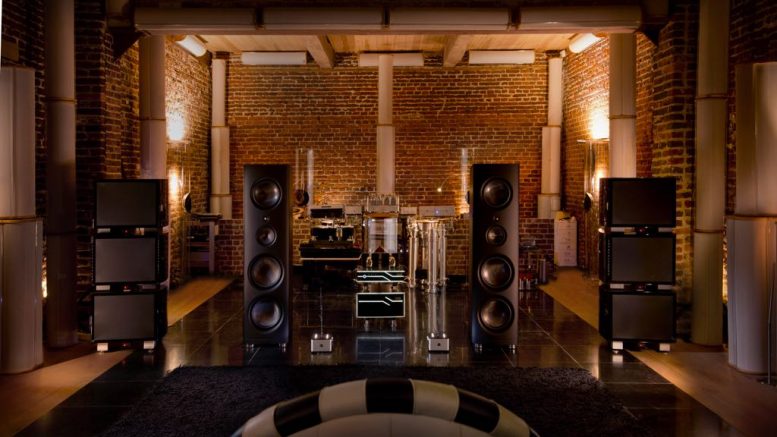
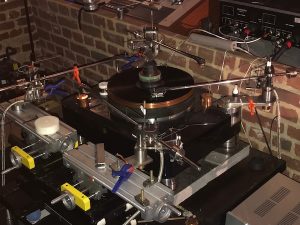
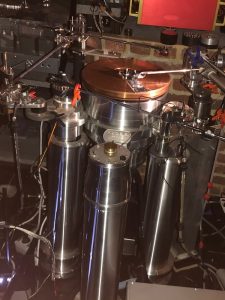
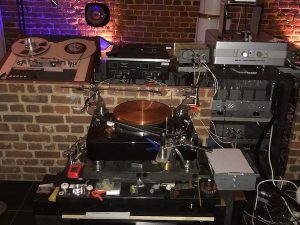
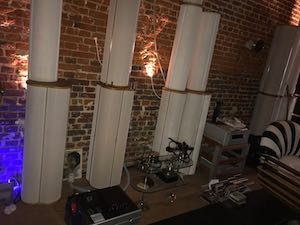
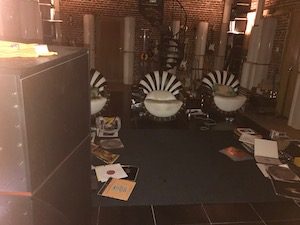
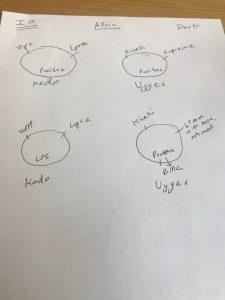
Be the first to comment on "Allnic, Aesthetix IO, Dartzeel, Kodo Beat, Vyger Indian Signature, Kiseki"